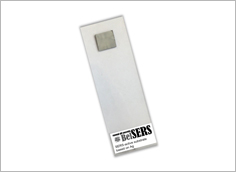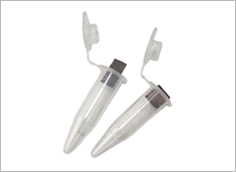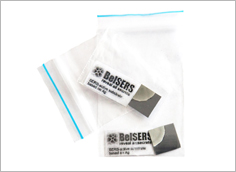SERS-ACTIVE SUBSTRATES FOR INCREASING SENSITIVITY OF RAMAN SPECTROSCOPY
|
|
|
|
PURPOSE
Surface-enhanced Raman spectroscopy (SERS) is an important analytical method in biomedicine, forensics, environment monitoring, and other spheres. This method enables to gather information about various low concentrated chemical connections. High sensitivity of this method is provided by the use of nanostrucural metallic surfaces for adsorption of analysed molecules – the so-called SERS-active substrates
Solid SERS-active substrates show femtomolar detection limit, signal variation within one substrate or a batch of substrates from 5 to 7%, and feature an extended storage period
TECHNICAL CHARACTERISTICS
| Active materials | silver nanoscale hollows, dendrites, nanoparticles |
| Detection limit, М | 10-3...10-15 * |
| Excitation wavelength | visible and near IR ranges ** |
| Storage period | 12 months *** |
| Analytes | porphyrins, protein, fatty acids, DNA, organic dyes, cyctochromes, chlorine E6, heavy metals compounds, etc. |
* depending on the analyte
** depending on the type of substrate
*** requires processing in HCl before being used
PACKAGING OPTIONS
- Glass substrates with SERS-active areas (surface of active area: 100 mm2)
- Plastic bag with SERS-active substrate (surface of active area: 50 mm2)
- Eppendorf tubes with SERS-active substrate (surface of active area: 35 mm2)
MATERIALS
- SERS-active substrates. How to use BelSERS substrates.
- Morphology / characteristics. Ag-based substrates.
- SERS-active substrates for sensitivity improvement of Raman spectroscopy.
DEVELOPER
R&D LAB 4.8 «Applied plasmonics»
CONTACTS
6, P.Brovki str., 220013, Minsk, Republic of Belarus
☏ +375 17 293 88 43
🖷 +375 17 390 96 28
🖂 h.bandarenka@bsuir.by
🌐 plasmonics.by
OTHER INNOVATIONS IN THIS AREA


